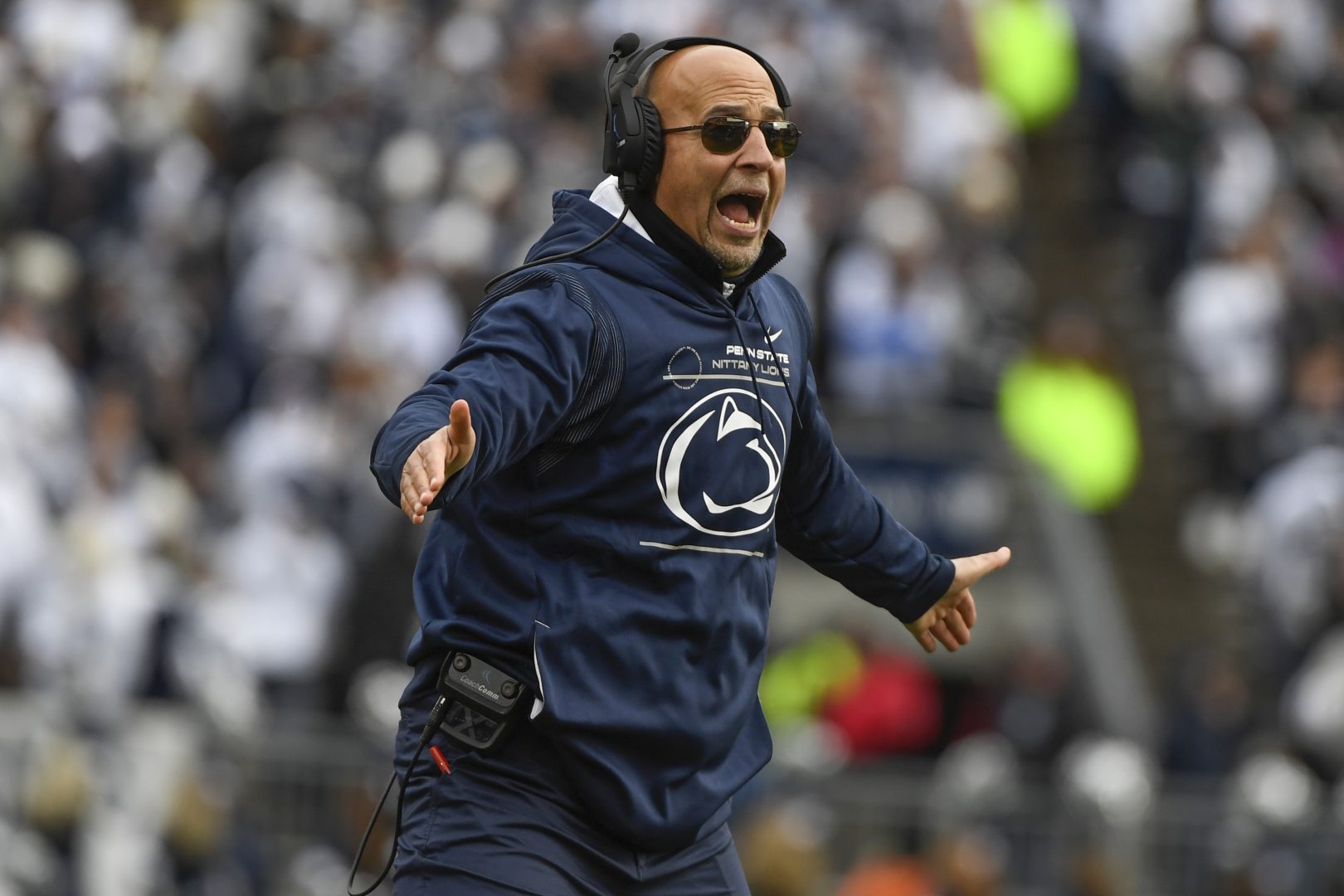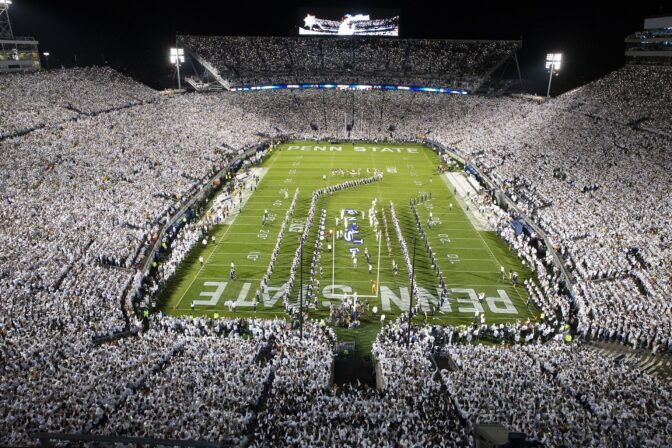
Penn State coach James Franklin reacts during the team's NCAA college football game against Rutgers in State College, Pa., Saturday, Nov. 20, 2021. Penn State won 28-0. (AP Photo/Barry Reeger)
AP Photo/Barry Reeger

Penn State coach James Franklin reacts during the team's NCAA college football game against Rutgers in State College, Pa., Saturday, Nov. 20, 2021. Penn State won 28-0. (AP Photo/Barry Reeger)
AP Photo/Barry Reeger

AP Photo/Barry Reeger
Penn State coach James Franklin reacts during the team's NCAA college football game against Rutgers in State College, Pa., Saturday, Nov. 20, 2021. Penn State won 28-0. (AP Photo/Barry Reeger)
This story was produced by the State College regional bureau of Spotlight PA, an independent, nonpartisan newsroom dedicated to investigative and public-service journalism for Pennsylvania. Sign up for our regional newsletter, Talk of the Town.
The Penn State Transparency Tracker is an ongoing effort by Spotlight PA to document and share the ways in which the university is, and is not, being transparent with the community. Due to its special “state-related” designation, Penn State is not subject to open records laws beyond the public disclosure of basic financial information.
Unlike nearly all of its Big Ten counterparts, Penn State does not have to publicly disclose the salaries of its employees.
However, under Pennsylvania’s transparency law, Penn State does have to publicly report the salaries of all “officers and directors” and “the highest 25 salaries paid to employees of the institution.”
Last fall, Penn State’s head football coach, James Franklin, received a new 10-year contract extension making a guaranteed $7 million each year. Franklin was the highest-salaried employee on Penn State’s top-25 list for the fiscal year 2019-2020. The next year, however, he wasn’t included on the list at all.
According to Penn State’s latest publicly available tax filing, covering fiscal year 2020-21, three university employees were paid more than $1.6 million during that fiscal year but did not appear on the top-25 list of highest-salaried employees. Those employees include Franklin at $7.6 million, former men’s basketball coach Patrick Chambers at $2.1 million, and former assistant football coach Brent Pry at $1.6 million.

Heather Khalifa / Philadelphia Inquirer
Penn State, like many universities, does not disclose the financial values of its students’ NIL contracts.
Curious why the coaches weren’t on the top-25 list, Spotlight PA asked Penn State the following questions:
1. Penn State’s 2022 Right to Know report does not include the salaries of Penn State coaches (James Franklin, for example) who were included in previous top 25 lists. Why are the salaries of Mr. Franklin and other potential Penn State coaches left off of the top 25 list? Do their salaries no longer meet the top 25 threshold?
2. The university’s Public Reports website states, “Among the employees listed within the filing, only the compensation of University officers is paid from funds provided principally by tuition and/or Commonwealth appropriation. The compensation of the other employees is provided from self-supporting entities (Penn State’s Milton S. Hershey Medical Center or Intercollegiate Athletics) that do not use funding from Commonwealth appropriations or student tuition.” Can you please provide the legal justification for not reporting the compensation of all top university employees? I do not see this kind of exception to reporting in Pennsylvania’s Right to Know Law.
Penn State responded in an email:
“The relevant coaches’ salaries are listed on p. 12 of the 2022 RTK report,” Wyatt DuBois, assistant director of university public relations, wrote. “The text you shared from the website simply notes the funding sources for the salaries of the officers and other employees listed in the report.”
Seeking clarity, Spotlight PA followed up with these questions:
Why are the other names on p. 11-12 of the 2022 RTK report (Barron, Dunham, Gray, Jones, Massini, Barbour) repeated in Section 2 or Section 3 of the report but the coaches are not? If the Section 3 list is to be a list of the top 25 salaries not already mentioned on the 990, why is there repetition?”

Barry Reeger / AP Photo
Penn State cornerback Johnny Dixon (3) breaks up a pass intended for Central Michigan wide receiver Noah Koenigsknecht (25) during the second half of an NCAA college football game, Saturday, Sept. 24, 2022, in State College, Pa.
Penn State responded in an email:
“The Right-to-Know report includes two lists of the university’s highest-paid employees: Form 990 is an IRS report and Sections 2 and 3 are a state report,” DuBois wrote. “The pay listed for employees on Form 990 is defined by the IRS as wages, which includes base salaries, bonuses, incentive payments and other income. The pay listed for employees in Sections 2 and 3 includes base salaries only. The individuals who are listed among the highest paid employees on Form 990 but not listed in Section 3 of the RTK report are not reported in Section 3 because their base salaries fall outside of the top 25 highest base salaries.”
Based on that exchange, here’s what you need to know:
During the period covered in Penn State’s latest tax filing, Franklin’s base salary was $500,000 with $6.5 million in guaranteed supplemental pay. The lowest salary on the list was $662,000. Similarly, other coaches’ base salaries don’t crack the top 25 and are no longer on the university-produced list.
Help support the Penn State Transparency Tracker by submitting tips or questions to wmassey@spotlightpa.org. You can also share documents and other materials to help make our reporting more robust. Read more about sharing such information here.

A collection of interviews, photos, and music videos, featuring local musicians who have stopped by the WITF performance studio to share a little discussion and sound. Produced by WITF’s Joe Ulrich.
The days of journalism’s one-way street of simply producing stories for the public have long been over. Now, it’s time to find better ways to interact with you and ensure we meet your high standards of what a credible media organization should be.